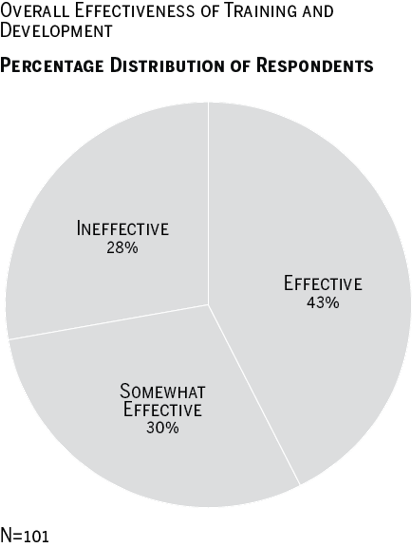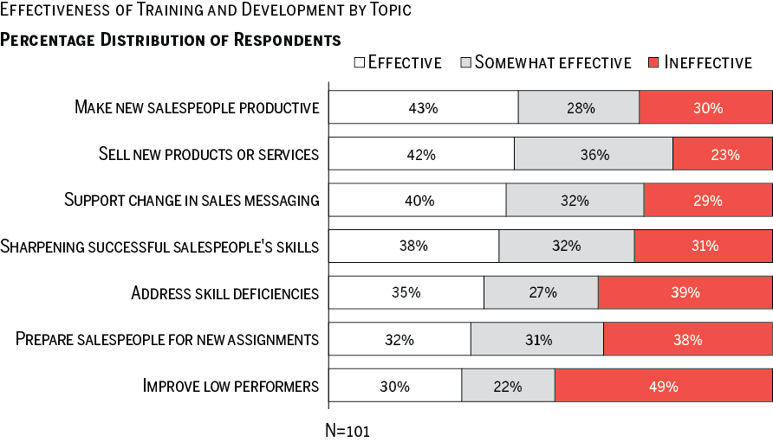The Sales Management Association recently concluded a detailed study of the state of training and development within sales organizations of 111 companies, covering over 80,000 salespeople and 15,000 sales managers.
The study revealed some concerning details about the woeful state of training and development and shed some light on how to improve it.
A large majority of firms are ineffective at sales training. Just 43% rate their salesperson training and development efforts as effective overall, and just 30% to 43% are effective in any of the seven specific training areas we researched.


A high degree of change also appears to be the norm in most sales organizations. In the past 12 months, 75% of firms refocused sales strategy, 70% entered a new market, and 82% introduced a new product or service. This means sales training is a constant ongoing affair at most firms.
According to independent research by Association of Talent Development, organizations spend an average of $1,459 per salesperson on sales training every year. The 111 firms considered in our research thus invest on average ~US$140M in training its 95,000 strong sales force. As per our research US$60M of this US$140M is leveraged effectively.
Our research shows that a named sales enablement function has a clear and measurable impact on overall effectiveness of training. Firms with a sales enablement function have rates of overall sales training effectiveness 29% higher than other firms (See Figure 3 below). This correlates with better utilization of the monetary investments and could lead to substantial cost savings.
Sales enablement offers a formal nexus for sales training and content distribution efforts within the sales organization. Focused on educating salespeople and equipping them with relevant content, its emergence coincides with the adoption of eponymous learning and content management technologies. Sales enablement (as a function) is therefore closely associated with these platforms, purpose built for advancing sales force learning and content asset management.
We found that firms with a named sales enablement function are more effective in training and developing salespeople — 15% to 31% more effective across seven distinct training topics, compared to firms without a sales enablement function. Sales enablement’s presence correlates with a 31% improvement in supporting changes in sales messaging, and a 15% improvement in improving low performing salespeople.

Our research also established the positive impact of a sales enablement function on four specific areas, each of which our research correlates with improved sales training effectiveness. The four are:
- Improving training technology utilization
- Increasing salesperson engagement in training activities of all kinds
- Encouraging more purposeful training investments
- Improving training outcomes’ measurement efficacy
To learn more about sales enablement practices and read the detailed report please reach out to the author at vlohia@salesmanagement.org or support@salesmanagement.org.





